#even though the desert i live in is the columbia plateau
Explore tagged Tumblr posts
Text
I feel like the cobra of a snake charmer when listening to Arabian or Arabian-themed music, what with the drums, the flutes, the stringed instruments... I just wanna like, vibe while slithering from side to side, or fall asleep in my basket, while listening to this stuff. Or maybe ride a camel in a merchant caravan. That kind of Ali Baba-type stuff, y'know?
#I don't even know who Ali Baba is#is he one of the characters from that fuckin. the fuckin uh.#what was it fuckin called#1000 nights or some shit like that#??#idek#makes me feel weird that I barely known anything about islam#and the only arabic i know is 'islam' 'muslim' 'hijab(i)' and 'al-yahud'#also because i live in a desert#even though the desert i live in is the columbia plateau#this isn't even an arabic desert. this isn't a desert in 'the old world'#this desert is a salishan and sahaptin desert#in territory occupied by the colonialist usa#camels don't live here. some muslims live here but aren't the majority.#and english spanish russian chinese languages and probably nahua are the best ones to know here#in terms of the amounts of speakers#and yet even so. deserts just feel fundamentally arabic to me#i've never even been to arabia and i'm literally a white american. what the fuck would i know about arabia.
6 notes
·
View notes
Text
When I was a child, the first love, after my family and dog, was the west. It is a story I have told before - a road trip to Colorado when I was ten years old. That love remains, though it is confusing at times to now drive east to regain the west. For me, the west was and still is that area that begins at the dryline, which runs from Texas into Canada and separates a predominately green Earth from a sepia-toned prairie that runs to the foothills of the Rocky Mountains. Now, living to the West of those Mountains, my internal compass is confused.
But the feeling of home does grow. In the afternoon, as I drove east from my work in downtown Spokane, I saw a storm moving over the tops of the mountains toward the valley. It was a beautiful sight as the setting sun reflected off dark clouds rolling over the peaks and into the Columbia plateau. After the storm passed, it left caps of snow on the mountains. Here in the valley, it was in the seventy-degree range.

There is a myth at large that the Spokane - Cour d’Alene corridor in the valley is that we are being swamped by people fleeing California and the far west coast. Yes, people are moving here, and the area is growing, but the housing shortage has been artificial, and though the valley is filling with people, it is not the breakneck pace the media would like us to believe. Many people are holding on to their houses and not selling. As a realtor told me yesterday, in a small market like Couer d’Alene of about 60,000, a slight increase in population can seem like a massive flood. She also said that many properties are being bought by outside investors from China. Even before the pandemic, the market was tight. She also said that in the past, Californians move after one or two winters. It is not as cold as Montana, but it does get cold and very snowy.
This move has had a positive effect on me. I have been busy, and we have been slow to unpack. I have avoided the “news” media on the web as well as social media. Doing so has allowed me to find my center as a human being. I have realized that frustration over involvement with social media and politics allowed me to make an ass of myself and spend my time striking out like a wounded animal. I moved into a very dark and unkind place. If even half of what is going on with “woke” culture is authentic, the country is going to hell in a shopping cart, and I am better off not getting involved until the shooting starts.
When I have checked the “news,” I don’t find so much “news” as a lot of opinion pieces written by a lot of people I probably would not choose to share a cup of coffee with. Frankly, what passes as news is manipulation. I am quickly concluding that the major fault of big tech media is that too few people own and control the information, too many people have a forum to express an opinion, and too few people are really sharing information – pretty much like I just did.
Who cares what “Joe or Jane Dirt” has to say? I prefer what the trees and the red-shouldered hawk told me yesterday. They make much more sense.
Driving home from work and into the Douglas fir-covered hills has helped as well. The change in scenery and climate has improved my arthritis and the depression that Seattle brought on to me.
I continue to work through Edmund Morris’ Theodore Rex. It is a massive book and reads like a novel detailing almost day by day Roosevelt’s presidency. Some parts describe the presidency hour by hour. For all his genius, I am not sure Roosevelt is someone I would want to have coffee with either. I find myself wanting to diagnose him; his behaviors are so extreme. Other than hyperactive, I can think of nothing that fits. But I am trying to read this biography without filling myself with opinions about the man. What he accomplished is remarkable. I have had neither the level of genius nor the drive for power and fame he appears to have had. I guess that is why I am not a president.
But I do share his love of the west. I also share his passion for the core values of integrity, courage, and honor. I think many more people have that passion than the current writings and speeches of academics and politicians we are inundated with will admit too.
The day has broken now over the “Western” mountains to my east. I will be moving things into storage and soon begin the process of sorting and disposing of many things I only thought I needed. I do believe I have finally found a home. I feel the positive energy of home I always felt in New Mexico and find that the harsh brutality the desert ground into people does not exist here. I find I want to explore - to get into my truck and just drive, but I know I do not want to go further east than the dryline or further west than the Columbia River. The Rocky Mountains are home, and short of a family emergency, I have no need to ever leave again. I only left the Rockies to connect Merilyn with her family and her sense of “home” and discovered that did not work - though she does miss the sea and is struggling because she feels like she has to relearn how to get things accomplished. I have realized that the climate and the culture of Seattle were aging me and quickly killing me. If I never go there again, I will remain a happier person.
A skein of Canadian geese just announced the morning as they flew over. It is a good day to embrace life again.
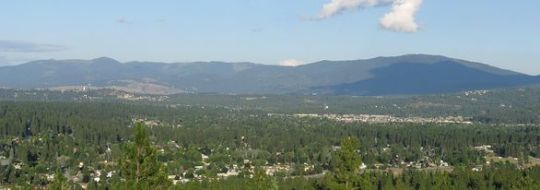
9 notes
·
View notes
Text
High biodiversity and endemic species distribution range in the deserts of Turtle Island’s “Southwest”:
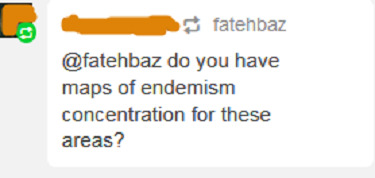
Sure. Some to start with, which demonstrate high plant biodiversity and endemism in “the deserts” of “the Southwest,” including an obligatory shout-out to a wonderful endemic species of the North American deserts:



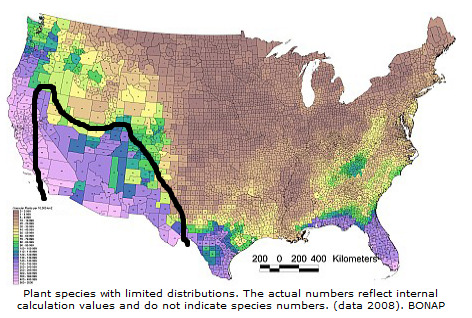


Just to “Situate the Conversation,” some other charismatic endemic species:


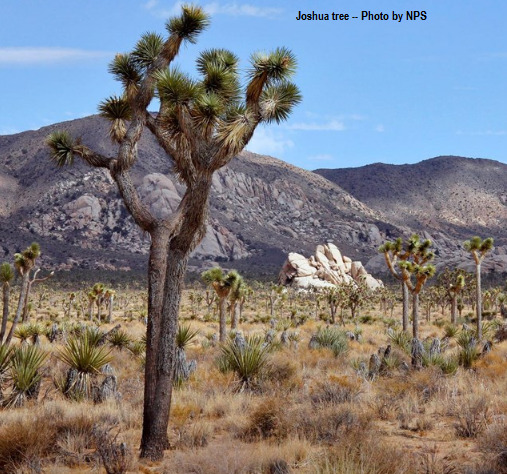
The 3 “true deserts” or “hot deserts” in the region are the Chihuahuan Desert; Sonoran Desert; and Mojave Desert. [This map is a little outdated; the Mojave actually clearly extends into the southwestern corner of Utah, for example.]
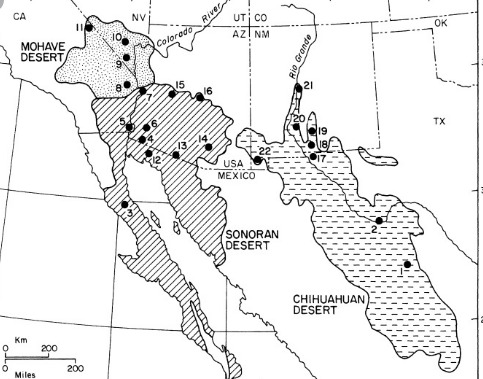
And the 3-ish most prominent “cold deserts” or “semideserts” are the Great Basin Desert; Colorado Plateau; and Arizona-New Mexico Plateau. [Map from HARC, using the WWF’s and EPA’s ecoregion standards, which I generally think are pretty good.]

Disclaimer: “Great Basin Desert” is more like semiarid steppe; it receives more moisture in the form of snow, and it’s also characterized mostly by sagebrush steppe, though saltbrush and Lahontan sand playas are also widespread. But, basically, it is contiguous with the nearby true deserts. Also, I personally think it’s useful to split the Great Basin into 2 general regions: (1) the really “desert-y” portion is the Great Basin Desert ecoregion displayed on the map here in green as “Central Basin and Range”, which hosts the majority of saltbrush and salt playas; and (2) then there’s the “northern Great Basin” of the Columbia Plateau and Columbia River watershed (Oregon High Desert and southern Idaho), which is relatively less “desert-y.” Anyway.
-----
Here’s a look at the Mojave Desert as one of the most prominent regions of concentrated “rare” species. The (1) Colorado Desert; (2) the boundary between the Wasatch Range and the “semi-desert” of the Colorado Plateau; (3) the Sky Islands; and (4) the Chihuahuan Desert also host concentrations of globally-rare small-range species. [From Thom/son Higher Education.]

-----
Have to say something about ...
~the Sky Islands~
Even though chaparral of Mediterranean California and temperate rainforest of the Pacific Northwest are arguably 2 of the rarest and most distinct terrestrial biomes on the planet, the Sky Islands still function as one of the top 15-ish most notable biodiversity hotspots on the globe. Here, the Sky Islands are included in a wider ecoregion known as “Madrean pine-oak woodlands.”

The Sky Islands region - at the heart of the “desert” region of North America - is arguably one of the most distinctive biodiversity hotspots on the continent:

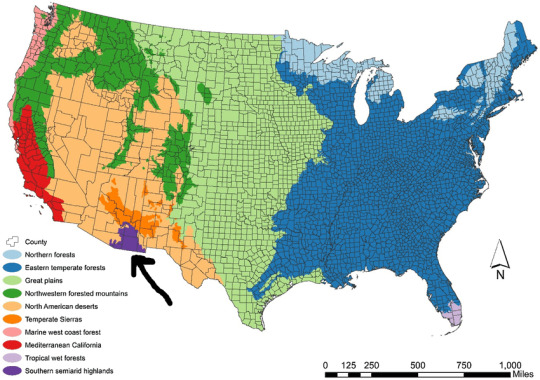
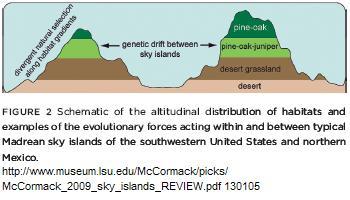
-----

Defenders of W!ldlife, 2018. Map Data Sources: Commission for Environmental Cooperation; Reveal from The Center for Investigative Reporting and OpenStreetMap contributors; The Atlas of Canada, Instituto Nacional de Estadística y Geografía, and USGS
-----




Endemic species ...
Some famous maps of distribution and concentration of endemic species in North America. [I actually have some disagreements with these maps, and how the researchers loosely defined the distinction between an “endemic species” and a “small-ranged species.” For example, the Pacific Northwest hosts more endemic amphibians than is displayed on the maps; the amphibians only live within the narrow marine-influenced coastal temperate rainforest zone, but since the zone stretches across latitudes between Vancouver Island and the Klamath Mountains, the animals aren’t considered “endemic” ... even though they’re clearly endemic to PNW rainforest. But generally, I think they’re great resources and useful maps.]
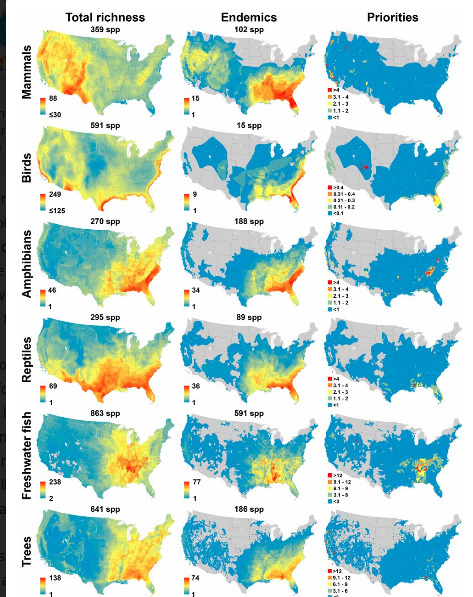
-----
The Sky Islands (where the Sonoran Desert meets the Chihuahuan Desert) as area of high bird species diversity:

-----
These maps come from a famous 2013 publication:

-----
The “cold deserts” of the northern Great Basin usually get even less attention and credit than hot deserts. But!

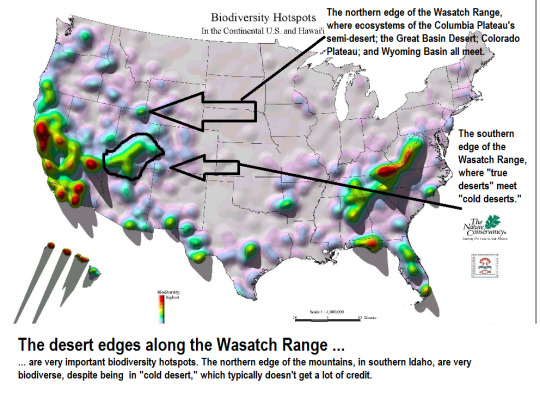
110 notes
·
View notes
Text
U.S. Destinations Preparing For Overtourism Burst During Total Solar Eclipse
Cities such as Madras, Oregon in the path of next month's total solar eclipse are preparing for large influxes of tourists eager to experience the spectacle. Amy Meredith / Flickr
Skift Take: Cities like Madras, Oregon and others in the path of next month's total solar eclipse have lessons to offer other destinations about hosting once-in-a-lifetime events and the kinds of decisions and processes that it takes to welcome throngs of visitors.
— Dan Peltier
On Monday morning, August 21, a 70-mile-wide swath of America from Oregon to South Carolina will plunge into darkness during daytime hours.
The total solar eclipse—the first fully visible from the U.S. since 1979 and the first coast-to-coast total solar eclipse in 99 years—will reveal plasma flares on the sun visible from earth as the moon passes directly between them.
It will also drive an expected 100,000 people to the tiny town of Madras, Ore.—current population a little more than 6,000.
Twenty-four of the visitors will stay at Lysa Vattimo’s house.
“It’s organized chaos,” Vattimo said with a laugh. She is the lead member of the City of Madras Solar Eclipse Planning Group, a team formed more than two years ago after city organizers realized they could have a serious logistics problem on their hands. Their first tip-off was even earlier—four years ago when a travel agency called Continental Capers bought out the entire Inn at Cross Keys in anticipation of this year’s event. In such a tiny locale, such a purchase generated plenty of curiosity.
“Apparently, some astronomer said that Madras was the premier location for viewing the eclipse based on its high altitude, big plateau, and the weather compared to other locations across the path,” Vattimo said. “He could barely get anybody [here] to pay attention to him. But when all the hotels started booking up years in advance, we realized this was a big deal.”
The Premier Viewing Spot
Madras is far from the only location along the flight path. Idaho Falls, Idaho; Lincoln, Neb.; Nashville, Tenn.; and Columbia, S.C., are among the nine other cities NASA lists as ideal for watching. The first point of contact will be Lincoln Beach, Ore., at 9:05 a.m. local time; “totality,” as astronomers call it, begins there at 10:16 a.m. Over the next 90 minutes, the darkness will cross through Idaho, Wyoming, Montana, Nebraska, Iowa, Kansas, Missouri, Illinois, Kentucky, Tennessee, Georgia, and North and South Carolina, ending in Charleston at 2:48 p.m. Eastern Daylight Time. Its longest duration will be near Carbondale, Ill., where the moon will block the sun for two minutes and 40 seconds.
As the smallest and some say optimal viewing spot along the route, the ranching town 12 miles from Warm Springs Indian Reservation will experience the onslaught of eclipse chasers quite dramatically. With its high elevation, flat plateau land mass flanked by pristine snow-covered mountains, and crystal clear desert skies, it’s perfectly suited to stargazing.
As for the eclipse itself, ask a science lover why it’s compelling, and he or she will respond in disbelief that you even have to ask.
“It hasn’t happened like this in a century, and it’s the only one we’ll see in our lifetime,” said Molly Baker, the head of communications at Arizona’s Lowell Observatory. “It’s going to be incredible when it gets dark and to see the nocturnal animal activity.”
Lowell Observatory and Oregon State University are sending dozens of scientists to Madras to observe and record the event; NASA is sending a cadre of astronomers. They expect to observe and document unusual animal activity in addition to the plasma flares and other celestial activity during the eclipse. (When unexpected darkness falls, many animals, such as birds, think night has fallen and take to roost.)
Baker and her 30 colleagues attending, plus additional volunteers, plan to stay mostly in campgrounds and RVs. She did admit to some trepidation.
“I’m looking forward to it, but I’m also nervous,” said Baker, who will arrive a couple days prior to the event. “It going to be pretty hectic.”
Handling the Hoards
On their side of things, Vattimo and her team didn’t waste time. They contacted the Oregon state police, transportation authorities, and local business owners and residents to talk about how the region would sustain such an influx. “We knew we needed to lock arms, get to know each other really well, and get prepared,” she said.
Madras’s chamber of commerce has held dozens of town meetings to urge business owners to stockpile cash, gas, and wares. The town and surrounding campsites have rented nearly 700 portable toilets, including some from Idaho, to meet demand, with garbage trucks scheduled to run nearly 24 hours a day to transport trash to huge dumpsters before it begins to smell in the summer heat.
St. Charles Medical Center of Madras & Bend has loaded up on such supplies as gauze, bandages, painkillers, and other sundry items that medics would need to treat the general casualties frequent at any other large gathering, such as a music festival, say, or Burning Man. Doctors there have canceled vacations; pregnant women close to their due dates are being told to leave to avoid getting stuck, according to local reports. Restaurants such as regional favorite Black Bear Diner have bought five-weeks’ worth of supplies for one week of customers.
(Speaking of Burning Man, yes, there are multiple more free-spirited festivals planned for near Madras during the time of the eclipse. Expect those to have the same free-living energy—minus the corporate baggage—as the annual Black Rock Desert retreat.)
Where People Are Staying
Since area hotels sold out long ago, many farmers are renting out camping spaces on their land in plots with such names as Sunset Solar Campground, Solar Celebration, Solar Eclipse on the Farm, and Totality Awesome. Campsite rates run roughly $300 a night, with a three-night minimum; RV packages are running scheduled shuttles will move campers from the farms to restaurants and grocery stores in town. Music, food, and entertainment are all planned for display at a nearby fairground.
Christina Carpenter has 275 reservations to stay on her 100-acre farm, Organic Earthly Delights —and could accommodate twice that if she had to. She has hired 40 people to build decks, fences, bunks, tables, outdoor showers, and the like. Her Organic Earthly Delights will feature sustainable farming and bee keeping sessions, cooking demonstrations, movie screenings, and host Joel Salatin, the popular holistic farmer, author, and lecturer, during the week of the event.
She’s also importing experts for guided astrology lessons.
“The astronomers are so excited,” Carpenter said on the phone. She had just finished planting a cover crop of grass perfectly timed to flourish by the time of the eclipse. “They’re coming in from Hawaii, and they already sent their telescope ahead of them.”
Other residents as far away as Bend (43 miles away) and Prineville (30 miles away) are making a killing on Airbnb and VRBO bookings, either renting out rooms in their homes or renting the whole house for the weekend in a matter of minutes. Rates on Airbnb range from $500 to $1,500 for a room for one night; entire houses are listed for $2,000 and more. You can stay on a pontoon boat in a nearby lake for $2,850, though you must bring your own lifejacket, which is required for the stay.
“There is a sense of panic,” said Beth Rasmussen, a Bend native. Rasmussen and her husband, Jesse, are the language arts and social studies teacher at Pilot Butte Middle School and vice principal of Jewell Elementary, respectively. As the parents of two young girls, they plan to stay put for the event, if only to avoid an anticipated six- or eight-hour drive back home along Highways 97 or 26.
“ They are telling us to expect one million people to come to Central Oregon,” Rasmussen said. “Everybody knows about it. There is definitely a lot of hype.”
The Deluge
In fact, large billboards along the two-lane highway into and out of town have advertised the event for years. Rick Hickmann, who has lived in nearby Bend since 1976, said he was dumbfounded when the billboards appeared two years ago. “I laughed when I saw it,” he said. “The sign was in the middle of nowhere, in the hot desert, with not a tree in sight. I thought, who in the world would go to Madras for that ?”
Fast-forward to July 2017 and the Oregon Department of Transportation is predicting “the biggest traffic even in Oregon history” and posting humorous bulletins in efforts to stave off vehicular calamity. (Two examples: Don’t be a luna(r)-tic: Arrive early, stay put, and leave late; If travelers plan ahead and come prepared, we’ll all dance together for two unforgettable minutes as the sun throws the moon’s shadow over us. If travelers don’t plan ahead, we’ll all go nowhere together for many forgettable hours probably throwing shade at each other.”
How to Do It Right
Not scared off yet? It’s not too late to get to Oregon to see the event. Flights into the nearest airport of any size, Redmond, the Saturday prior can still be had. They don’t cost as much as you might expect—nearly $700 from New York and $600 from Los Angeles, which is up slightly from routine fares but not, say, double what travelers might usually pay.
But don’t expect to get anywhere fast, and travel with plenty of water, gas, food, and any essential prescriptions. There’s plenty of room once you get there, as long as you’re OK with a lot of fresh air.
“You just have to be willing to camp,” Vattimo said. “There is glamping, or you can rent an RV and bring it out, or pitch a tent.”
On some of the farms around town, a friendly rancher will even set up the tent for you. It’ll beat staying with 23 others in a crowded home—though that might be a lunatic time, too.
This article was written by Hannah Elliott from Bloomberg and was legally licensed through the NewsCred publisher network. Please direct all licensing questions to [email protected].
0 notes
Text
U.S. Destinations Preparing For Overtourism Burst During Total Solar Eclipse
Cities such as Madras, Oregon in the path of next month's total solar eclipse are preparing for large influxes of tourists eager to experience the spectacle. Amy Meredith / Flickr
Skift Take: Cities like Madras, Oregon and others in the path of next month's total solar eclipse have lessons to offer other destinations about hosting once-in-a-lifetime events and the kinds of decisions and processes that it takes to welcome throngs of visitors.
— Dan Peltier
On Monday morning, August 21, a 70-mile-wide swath of America from Oregon to South Carolina will plunge into darkness during daytime hours.
The total solar eclipse—the first fully visible from the U.S. since 1979 and the first coast-to-coast total solar eclipse in 99 years—will reveal plasma flares on the sun visible from earth as the moon passes directly between them.
It will also drive an expected 100,000 people to the tiny town of Madras, Ore.—current population a little more than 6,000.
Twenty-four of the visitors will stay at Lysa Vattimo’s house.
“It’s organized chaos,” Vattimo said with a laugh. She is the lead member of the City of Madras Solar Eclipse Planning Group, a team formed more than two years ago after city organizers realized they could have a serious logistics problem on their hands. Their first tip-off was even earlier—four years ago when a travel agency called Continental Capers bought out the entire Inn at Cross Keys in anticipation of this year’s event. In such a tiny locale, such a purchase generated plenty of curiosity.
“Apparently, some astronomer said that Madras was the premier location for viewing the eclipse based on its high altitude, big plateau, and the weather compared to other locations across the path,” Vattimo said. “He could barely get anybody [here] to pay attention to him. But when all the hotels started booking up years in advance, we realized this was a big deal.”
The Premier Viewing Spot
Madras is far from the only location along the flight path. Idaho Falls, Idaho; Lincoln, Neb.; Nashville, Tenn.; and Columbia, S.C., are among the nine other cities NASA lists as ideal for watching. The first point of contact will be Lincoln Beach, Ore., at 9:05 a.m. local time; “totality,” as astronomers call it, begins there at 10:16 a.m. Over the next 90 minutes, the darkness will cross through Idaho, Wyoming, Montana, Nebraska, Iowa, Kansas, Missouri, Illinois, Kentucky, Tennessee, Georgia, and North and South Carolina, ending in Charleston at 2:48 p.m. Eastern Daylight Time. Its longest duration will be near Carbondale, Ill., where the moon will block the sun for two minutes and 40 seconds.
As the smallest and some say optimal viewing spot along the route, the ranching town 12 miles from Warm Springs Indian Reservation will experience the onslaught of eclipse chasers quite dramatically. With its high elevation, flat plateau land mass flanked by pristine snow-covered mountains, and crystal clear desert skies, it’s perfectly suited to stargazing.
As for the eclipse itself, ask a science lover why it’s compelling, and he or she will respond in disbelief that you even have to ask.
“It hasn’t happened like this in a century, and it’s the only one we’ll see in our lifetime,” said Molly Baker, the head of communications at Arizona’s Lowell Observatory. “It’s going to be incredible when it gets dark and to see the nocturnal animal activity.”
Lowell Observatory and Oregon State University are sending dozens of scientists to Madras to observe and record the event; NASA is sending a cadre of astronomers. They expect to observe and document unusual animal activity in addition to the plasma flares and other celestial activity during the eclipse. (When unexpected darkness falls, many animals, such as birds, think night has fallen and take to roost.)
Baker and her 30 colleagues attending, plus additional volunteers, plan to stay mostly in campgrounds and RVs. She did admit to some trepidation.
“I’m looking forward to it, but I’m also nervous,” said Baker, who will arrive a couple days prior to the event. “It going to be pretty hectic.”
Handling the Hoards
On their side of things, Vattimo and her team didn’t waste time. They contacted the Oregon state police, transportation authorities, and local business owners and residents to talk about how the region would sustain such an influx. “We knew we needed to lock arms, get to know each other really well, and get prepared,” she said.
Madras’s chamber of commerce has held dozens of town meetings to urge business owners to stockpile cash, gas, and wares. The town and surrounding campsites have rented nearly 700 portable toilets, including some from Idaho, to meet demand, with garbage trucks scheduled to run nearly 24 hours a day to transport trash to huge dumpsters before it begins to smell in the summer heat.
St. Charles Medical Center of Madras & Bend has loaded up on such supplies as gauze, bandages, painkillers, and other sundry items that medics would need to treat the general casualties frequent at any other large gathering, such as a music festival, say, or Burning Man. Doctors there have canceled vacations; pregnant women close to their due dates are being told to leave to avoid getting stuck, according to local reports. Restaurants such as regional favorite Black Bear Diner have bought five-weeks’ worth of supplies for one week of customers.
(Speaking of Burning Man, yes, there are multiple more free-spirited festivals planned for near Madras during the time of the eclipse. Expect those to have the same free-living energy—minus the corporate baggage—as the annual Black Rock Desert retreat.)
Where People Are Staying
Since area hotels sold out long ago, many farmers are renting out camping spaces on their land in plots with such names as Sunset Solar Campground, Solar Celebration, Solar Eclipse on the Farm, and Totality Awesome. Campsite rates run roughly $300 a night, with a three-night minimum; RV packages are running scheduled shuttles will move campers from the farms to restaurants and grocery stores in town. Music, food, and entertainment are all planned for display at a nearby fairground.
Christina Carpenter has 275 reservations to stay on her 100-acre farm, Organic Earthly Delights —and could accommodate twice that if she had to. She has hired 40 people to build decks, fences, bunks, tables, outdoor showers, and the like. Her Organic Earthly Delights will feature sustainable farming and bee keeping sessions, cooking demonstrations, movie screenings, and host Joel Salatin, the popular holistic farmer, author, and lecturer, during the week of the event.
She’s also importing experts for guided astrology lessons.
“The astronomers are so excited,” Carpenter said on the phone. She had just finished planting a cover crop of grass perfectly timed to flourish by the time of the eclipse. “They’re coming in from Hawaii, and they already sent their telescope ahead of them.”
Other residents as far away as Bend (43 miles away) and Prineville (30 miles away) are making a killing on Airbnb and VRBO bookings, either renting out rooms in their homes or renting the whole house for the weekend in a matter of minutes. Rates on Airbnb range from $500 to $1,500 for a room for one night; entire houses are listed for $2,000 and more. You can stay on a pontoon boat in a nearby lake for $2,850, though you must bring your own lifejacket, which is required for the stay.
“There is a sense of panic,” said Beth Rasmussen, a Bend native. Rasmussen and her husband, Jesse, are the language arts and social studies teacher at Pilot Butte Middle School and vice principal of Jewell Elementary, respectively. As the parents of two young girls, they plan to stay put for the event, if only to avoid an anticipated six- or eight-hour drive back home along Highways 97 or 26.
“ They are telling us to expect one million people to come to Central Oregon,” Rasmussen said. “Everybody knows about it. There is definitely a lot of hype.”
The Deluge
In fact, large billboards along the two-lane highway into and out of town have advertised the event for years. Rick Hickmann, who has lived in nearby Bend since 1976, said he was dumbfounded when the billboards appeared two years ago. “I laughed when I saw it,” he said. “The sign was in the middle of nowhere, in the hot desert, with not a tree in sight. I thought, who in the world would go to Madras for that ?”
Fast-forward to July 2017 and the Oregon Department of Transportation is predicting “the biggest traffic even in Oregon history” and posting humorous bulletins in efforts to stave off vehicular calamity. (Two examples: Don’t be a luna(r)-tic: Arrive early, stay put, and leave late; If travelers plan ahead and come prepared, we’ll all dance together for two unforgettable minutes as the sun throws the moon’s shadow over us. If travelers don’t plan ahead, we’ll all go nowhere together for many forgettable hours probably throwing shade at each other.”
How to Do It Right
Not scared off yet? It’s not too late to get to Oregon to see the event. Flights into the nearest airport of any size, Redmond, the Saturday prior can still be had. They don’t cost as much as you might expect—nearly $700 from New York and $600 from Los Angeles, which is up slightly from routine fares but not, say, double what travelers might usually pay.
But don’t expect to get anywhere fast, and travel with plenty of water, gas, food, and any essential prescriptions. There’s plenty of room once you get there, as long as you’re OK with a lot of fresh air.
“You just have to be willing to camp,” Vattimo said. “There is glamping, or you can rent an RV and bring it out, or pitch a tent.”
On some of the farms around town, a friendly rancher will even set up the tent for you. It’ll beat staying with 23 others in a crowded home—though that might be a lunatic time, too.
This article was written by Hannah Elliott from Bloomberg and was legally licensed through the NewsCred publisher network. Please direct all licensing questions to [email protected].
0 notes